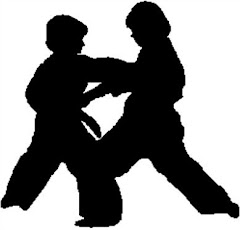
Karate Sparring
Karate sparring, known as kumite, is one of the most important segments of karate training, along with kata and kihon. It is a sort of exercise performed between at least two karate practitioners, using the techniques learned from the kihon and kata.
Contrary to the popular belief, the main purpose of karate sparring is to expose or show off a practitioner's technique. The term "technique" here not only refers to the physical techniques involved in the art of karate, but to the understanding of the fundamental and advanced concepts of the art, such as timing and distancing, as well. Given this idea, it is clear that unlike the other forms of fighting, karate sparring aims not to defeat, unless it is a tournament match, or injure the opponent. Karate sparring rather aims to develop and improve your karate skills and at the same time helping your opponent or your partner improve his or her own skills.
There is much to karate sparring than its being a developing and learning tool. It is a test of wills. Karate sparring allows the students to develop and enhance elements like control, distance, form, focus, eye intensity, reflexes, awareness, timing and coordination. And, as what most karate sparring experts have commonly noted, what makes karate sparring best is that it teaches the students how to apply the basic techniques and elements of the art, stances, and even the hip motions in a dynamic situation.
There are a number of possible variations in the practice of kumite or sparring. However, although it covers a vast rage of activities, the art can be broken down into two basic variations where one of the participants remains stationary, and where both remain moving.
In the traditional form of karate, there is what they call as Gohon Kumite, which is often identified as the first type of karate sparring for the beginners. In this type, the defender steps back each time, blocking the five attacks and performing a counterattack after the fifth block. The second type, however, looks nothing like the gohon kumite. It is known as Jiyu Kumite or free sparring, which is practiced by the more advanced karate sparring practitioners. This second variation is said to appear far closer to how the art would look if used in a real fight. This is due to the fact that in free sparring or jiyu kumite, the use of certain stances is not required.
In kumite or sparring, punches and kicks are the basic techniques. These techniques are generally considered in competitions to kill the opponent. However, since it is very difficult to find anyone willing to spar against you, or a sparring partner, to improve your technique, what most of the karate sparring students do is that they aim to deliver strikes with the maximum speed and power possible. The strikes, however, must be stopped at the moment of contact so to protect the opponent from any possible injury. In karate sparring, this is what actually improves the control you have over your strikes.


No comments:
Post a Comment